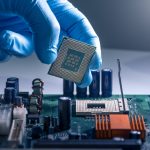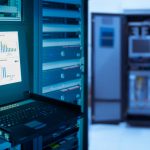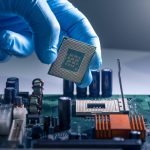Servers are critical components of IT infrastructure that help businesses perform a range of important tasks such as managing databases, hosting websites, and storing files.
However, server problems can quickly bring a company’s operations to a standstill, resulting in lost revenue, reduced productivity, and unsatisfied customers. In this article, we’ll provide server troubleshooting tips that can help organizations avoid these problems.
First of all, when troubleshooting server issues, it’s essential to approach the problem systematically. Start by identifying the symptoms of the problem and then use diagnostic tools such as event logs and system monitoring software to identify the root cause.
It’s also important to have a good understanding of a server’s configuration and capabilities. Familiarize yourself with the server’s hardware, software, and network configuration, and keep a record of any changes you make. This will make it easier to identify potential issues and troubleshoot them more effectively.
Hardware Issues
One of the most common server problems is related to hardware issues. Server hardware can fail or develop problems for several reasons, such as power surges, poor electrical infrastructure inside the building or server room, CPU overheating, hardware compatibility issues, hard disk failures or memory issues. These server computer hardware problems can cause the machine to crash, slow down, or stop functioning altogether.
Troubleshooting hardware issues
To troubleshoot hardware issues, you should first check if the hardware components of the server machine are properly connected and seated in their slots. Also, check if there are any loose cables or damaged parts. You should also run hardware diagnostic tests to identify any faulty components. If a component is found to be faulty, replace it with a new one.
Software issues
Server software can develop problems due to a range of issues such as misconfigured operating system settings, application conflicts, and corrupted files. Some common software issues include operating system crashes, applications not responding, and server services not starting.
Troubleshooting software issues
To troubleshoot software issues, you should first check the operating system configuration settings to ensure they’re set up correctly. You should also check for any software conflicts and ensure that applications are up to date and configured correctly. For example, a print server computer may have issues if the print spooler service is not working correctly. If the server crashes frequently, check the server’s event logs to identify the root cause of the issue. Additionally, you can run system diagnostic tests and error-checking utilities to identify and resolve software problems.
Network issues
Network issues can affect server performance and connectivity, leading to slow data transfer rates and poor client/server communication. Common network issues include DNS server failures, poor network infrastructure, and firewall misconfigurations.
Troubleshooting network issues
To troubleshoot network issues, you should first check the network infrastructure to ensure it’s functioning correctly. Ensure that the server is configured correctly to accept inbound remote access calls, particularly if it’s a remote access server. For domain controller’s configuration, ensure that the server’s IP address is a static IP address. If you’re using the server to host a mail server or your own mail domains, ensure that it’s configured correctly to accept relay messages. You should also check the DNS server settings to ensure they’re configured correctly. Incorrect network settings can also cause network issues. Make sure that the server’s IP address is configured correctly, and that any remote clients have the correct static IP addresses.
Performance issues
Server performance issues can arise due to a range of factors such as high CPU usage, insufficient memory, low disk space or misconfigured server applications. These problems can cause the server to slow down or stop responding.
Troubleshooting performance issues
To troubleshoot performance issues, the first step is to identify the cause of the problem. This can be done by monitoring server resources such as CPU usage, memory usage, and disk space. Once you’ve identified the cause of the problem, you can take steps such as upgrading hardware components, optimizing software settings, and removing unnecessary files to improve server performance.
Additionally, ensure that the server applications are configured correctly and optimized for performance. For example, a terminal server may require specific terminal services configuration settings to ensure optimal performance.
Security issues
Server security issues can arise due to a range of factors such as weak passwords, outdated software, and unsecured network connections. These problems can cause the server to be vulnerable to attacks, leading to data breaches and other security incidents.
Troubleshooting security issues
To troubleshoot security issues, you should first assess the server’s security to identify any vulnerabilities. You should also ensure that all software and operating systems are up to date and that there are no unnecessary services running on the server. In the case of a printing device attached to the server, ensure that the server’s print spooler service is secured, and access to it is restricted to authorized users only. Additionally, you can configure firewalls and other security measures to protect the server from external threats. Backups and disaster recovery are also critical components of server maintenance
Getting Ahead of Hardware Issues
While troubleshooting problems that have arisen is a priority, it’s important to remember that server maintenance should be an ongoing process, and you should regularly monitor and update your server to ensure that it remains secure and functional. If you encounter any issues that you’re unable to resolve on your own, you should seek assistance from a qualified network administrator or IT professional.
At Evernex, we provide multi-vendor third-party maintenance services that, in addition to helping you extend the life of your assets and increase your sustainability, provide the benefit of our expertise repairing any and all hardware issues that may arise. Contact us to learn more.




